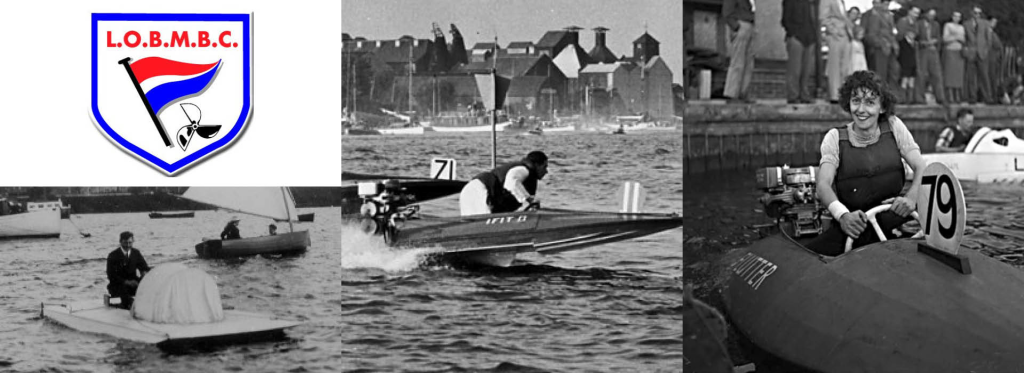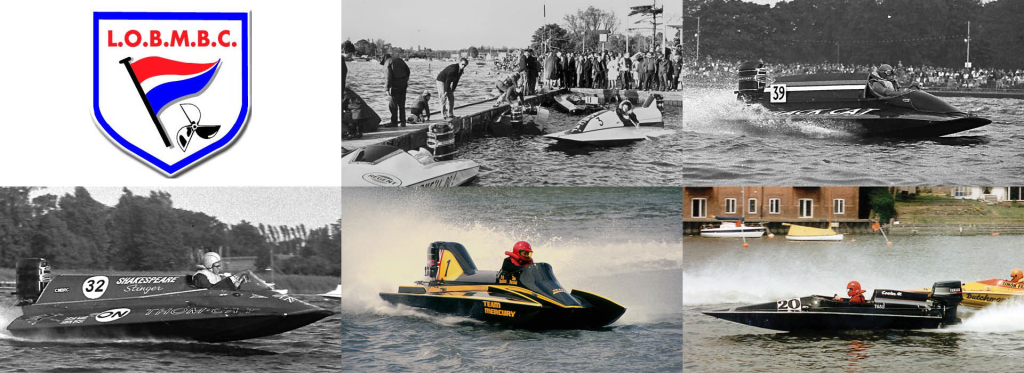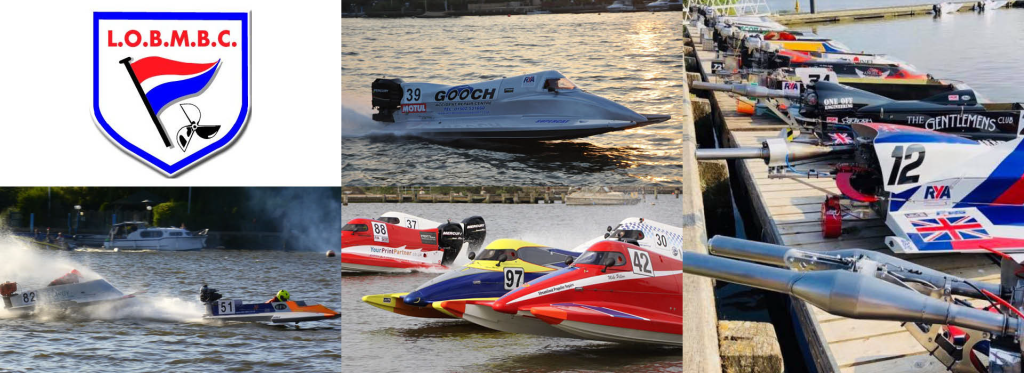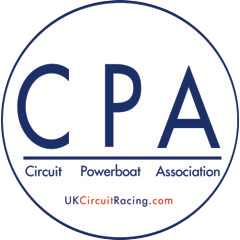LOWESTOFT & OULTON BROAD MOTOR BOAT RACING CLUB
The inaugural motorboat race meeting was held during Oulton Broad Regatta Week on Thursday 20th August 1903 as part of the sailing programme organised by the The Royal Norfolk & Suffolk Yacht Club, under the auspices of the Norfolk Automobile & Launch Club. This was the third race meeting to be held in East Anglia, the two previous having been held during the Wroxham Broad Regatta. Six motorised launches competed in the single heat handicap race which was won by the steam launch Monarch driven by Mr. T. Jary.
In the same time a proposed offshore race off Lowestoft was cancelled due to rough conditions, but it eventually took place the following year. In 1905 this event was moved inshore to Oulton Broad and organised by the British Motor Boat Club. This first meeting entirely devoted to motorboats was won by Mr. F. Shepherd in his 19ft launch Betty powered by a 20hp Brooke inboard who took home the W. Brooke & Co. Trophy.

All racing was terminated on the outbreak of WW1, and it was not until September 1929 that offshore racing was resumed at Lowestoft with the first running of the Daily Mirror Trophy, but due to rough conditions the event was postponed for several years.
The Oulton Broad Motor Boat Club was founded in 1933 by local dentist Charlie Nichols and organised its first race meeting in September of that year. The Mirror newspaper was again persuaded to sponsor the trophy with a £100 first prize, and it was transferred to Oulton Broad in 1936. The starting gun was fired 4000 miles away in the USA from outside his boathouse by world water speed record holder Gar Wood, the sound being transmitted by transatlantic telephone. The winner was George Treglown in his 250cc Johnson powered hydroplane Black Magic. The American Treglown family, who lived on the edge of the Broad, were prominent pre-war racers and members of the first British team to compete in overseas outboard events in Europe and the USA during the late 1930’s. Edward Treglown also organised speed record attempts on the New Cut at Haddiscoe, setting a national 350cc B class record of 37.07 mph. In 1937 the Club organised its first international race which attracted a 3-boat team from Germany for the Daily Mirror Trophy. For the 6pentrance fee a crowd of 10,000 saw a fantastic speed of 32.23 mph reached by the winner Geoff Holt, a member of the Lancashire Club, who beat 23 entrants heats driving the 350cc Johnson powered Jeep.
Around 1948 one of the best known craft of the local racing scene appeared on the Broad Toby Suttons Lycoming powered Whisso-Bang. Her fame spread far and wide attracting visitors en-masse to the park. Whisso was superseded by another spectacular inboard hydroplane Rooster. This fiery boat was probably one of the biggest influences of many drivers. Big, noisy and fast, it had everything to appeal to spectators.

The Club received a boost at this time when Guy Batholomew, a director of the Daily Mirror newspaper, became interested in the racing whilst on holiday in the area. Keen to revive racing after the war, he commissioned Alan Darby to build six identical single step hydroplanes powered by British Anzani 350cc engines. These craft were hired at £10 for the season to local businessmen during the early 1950s. The idea proved a tremendous success because the following year these drivers went out and bought their own outfits. The popularity of inboard racing continued into the 1960’s thanks to the Albatross Marine concern at St Olaves who produced a range of aluminium runabouts.
By 1970 inboard runabout racing had disappeared although the Albatross is still very popular with members of the Classic Motor Boat Club. The inboards were superseded by outboard runabouts which were easily to maintain with numerous craft being constructed by the Yarmouth based Toby Marine (of Rooster fame) and by Yarecraft at Gorleston, owned by Frank and Francis Holmes. The 1960s also saw the introduction of inboard hydro racing with Nigel Bilton dominating the 1000ccImp powered category, finishing runner-up in the World R1 Championship at Nottingham in 1981.

At this time the runabout class saw a major change of direction in hull design when the first catamaran appeared on the Broad, when Pat Atkinson from Yarmouth acquired Akamo from Austrian boat builder Dieter Schulze. He was later joined by Bob Spalding and Tom Percival who went on to gain international success as works drivers for the major engine manufacturers. Bob became the Club’s first World Champion when he won the Formula 1 series in 1980. A major milestone in the Clubs history occurred in 1985 with a visit by Her Majesty the Queen and H.R.H. Prince Philip, who watched a drive-past of racing boats.
The outboard hydroplane section was revitalised in 1980 when Rex King introduced the 350cc Yamato motor from Japan, a class later adopted by the UIM (the world governing body) for international competition. Having organised several ordinary international races over the years, the Club was finally awarded its first major U.I.M. titled meeting when it successfully organised the World OSY.400 Championship in 1998. Competitors from as far afield as China, U.S.A. and Estonia competed in a outstanding event, with the overall title going to Marian Jung from Slovakia. The Club organised as second World OSY.400 Championship in 2007 with local driver Sean Barnard taking the title in spectacular style.
